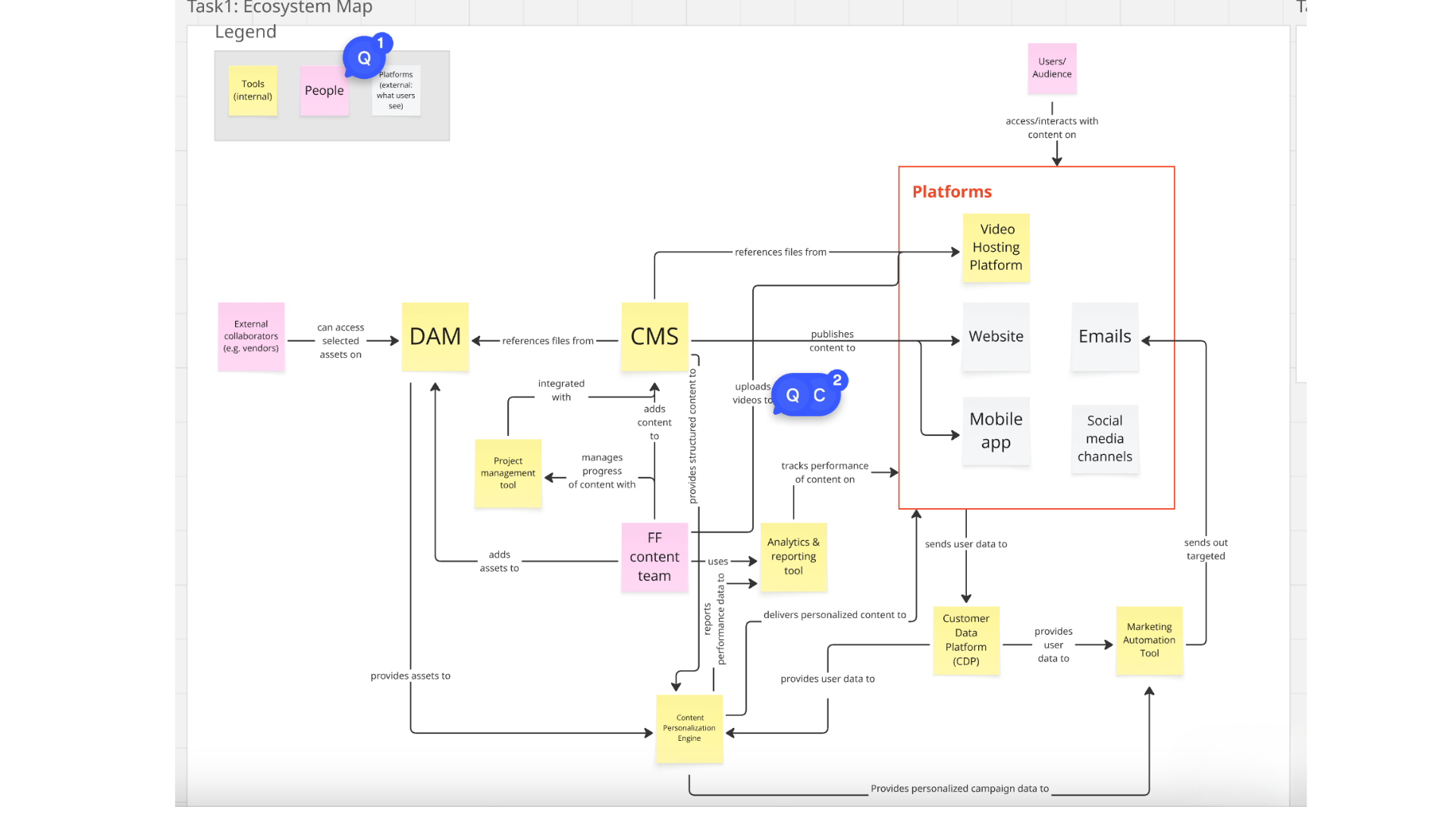As organizations grow, managing content becomes increasingly complex. Without clear structures and processes, even the best tools cannot ensure consistency or efficiency. Understanding how enterprise content management and content operations work helps teams create scalable systems that keep content relevant, usable, and aligned with business goals.
Mastering Enterprise Content: The Role of Content Operations #
Managing enterprise content involves a strategic approach to organizing, delivering, and maintaining content across an organization. It ensures that content not only meets immediate business needs but also remains adaptable for future demands. The "Management of Enterprise Content and Content Operations" elective, led by industry experts Carrie Hane and Deane Barker, provides a detailed framework for understanding how content management works and how content operations support it. This article outlines the principles behind enterprise content management and the role of content operations in driving efficiency and scalability.
The Foundations of Enterprise Content Management
Enterprise content management encompasses the processes, technologies, and strategies used to handle an organization's information assets. At its core, it focuses on structured content, which is treated as data that can be reused and adapted across multiple channels. This structured approach enables organizations to streamline workflows, reduce redundancy, and maintain consistency in content delivery.
Key technologies like Content Management Systems (CMS) and Digital Asset Management (DAM) play a crucial role in Enterprise Content Management. CMS platforms provide the infrastructure for creating, storing, and publishing content, while DAM systems specialize in organizing digital assets like images, videos, and documents. Together, these systems form the backbone of enterprise content management, supporting both operational efficiency and strategic adaptability.
Content Operations: The Engine of Enterprise Content Management
Content operations refer to the processes and workflows that enable the efficient creation, management, and delivery of content. While Enterprise Content Management provides the framework, content operations ensure that the framework functions smoothly. As explained by Hane and Barker, content operations include:
- Workflow Design: Creating clear and efficient processes for content creation, approval, and distribution. Workflows help teams collaborate effectively and maintain consistent quality standards.
- Integration of Systems: Connecting CMS and DAM platforms with other tools to create seamless content pipelines. This integration reduces manual work and improves accuracy.
- Governance and Sustainability: Establishing guidelines and practices to ensure content remains relevant, accurate, and aligned with organizational goals. Governance frameworks also help manage metadata, permissions, and version control.
By focusing on these operational aspects, content operations enhance the scalability and sustainability of enterprise content management systems.
Why Content Operations Matter
Content operations are critical to the success of enterprise content management because they translate strategic goals into actionable processes. By focusing on workflows, system integration, and governance, content operations ensure that content management systems function effectively. This alignment between strategy and operations allows organizations to deliver high-quality content consistently and efficiently.
In conclusion, enterprise content management is about more than just technology; it’s about creating systems and processes that support scalable, sustainable content delivery. Most of the time, challenges do not stem from the CMS itself but from the workflows and processes behind it. It is crucial that every team member involved in content strategy understands and supports these workflows. Misaligned processes cannot be saved by even the most advanced CMS or DAM systems. Content operations are therefore highly individualized - there is no universal solution. The right way is the one that aligns with the company’s goals and works effectively for its staff.
Where to go from here #
To explore how content management adapts to increasingly complex digital environments, we recommend reading Content for Complex Digital Environments. This article offers additional insights into the challenges and strategies of managing structured content at scale.
References #
Baker, Deane, & Hane, Carrie. (2025). Management of Enterprise Content and Content Operations, Lecture slides.
This article is a student-written report about the course "Management of Enterprise Content and Content Operations" in the 2nd semester of the M.A. program in content strategy. It has been authorized by the instructor Carrie Hane.

